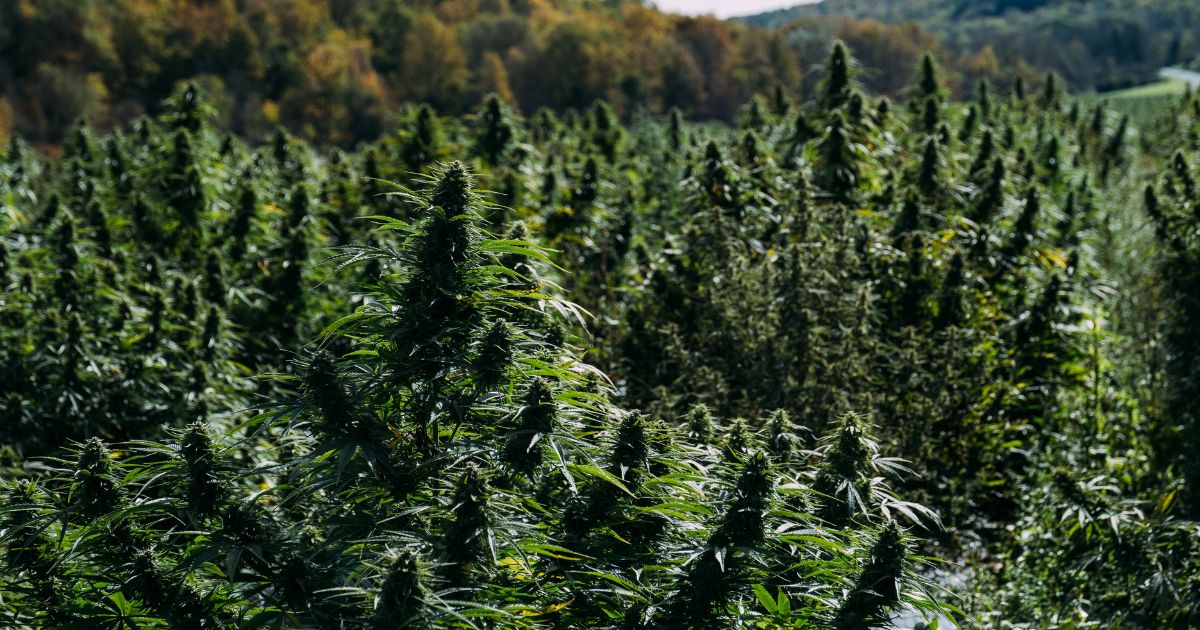A recent Humboldt County vote has sparked discussion and relief among many local farmers and cannabis enthusiasts, as the rejection of Measure A could signal the start of a reevaluation of marijuana cultivation policies.
The ballot measure, which aimed to implement stern restrictions on cannabis farms, was scrutinized for its potential to dismantle the local marijuana industry and upend the fabric of a community long intertwined with cannabis culture and the economy.

Humboldt County, nestled within California’s Emerald Triangle, wears many hats. Renowned for its natural beauty, redwood forests, and rugged coastlines, the region also serves as a Mecca for something less traditional but no less important — cannabis.
The county has been a pillar of the recreational marijuana industry, cultivating a legacy of small-scale, craft cannabis operations that have, in large part, defined the state’s broader marijuana culture.
However, this industry’s growth has not been without its challenges. With changing legal landscapes, the industry has matured under the weight of regulatory expectations, navigating a complex web of local and state mandates.
Measure A sought to add yet another layer, and its defeat by a resounding 73% opposition vote has brought a sense of reprieve to those who feared for the future of cannabis cultivation in their home.
Some Of The Controversial Implications of Measure A
If Measure A had passed, it would have significantly reshaped the landscape of cannabis cultivation in Humboldt County, with a specific focus on capping the size of cannabis farms to a maximum of 10,000 square feet.
Such a restriction would have immediately rendered hundreds of licensed farms noncompliant, thrusting them into a precarious legal and financial situation overnight.
Additionally, the measure proposed mandatory public hearings for all grow operations exceeding 3,000 square feet, adding a layer of bureaucratic red tape that could stymie the efficiency and privacy of these businesses.
Many of the restrictions embedded within Measure A were seen as fundamentally untenable for small-scale cultivators. For instance, Section CC-P13 of the initiative stipulated that farms must be located on “category 4” roads.
Given that hundreds of existing farms do not meet this criterion, and with local engineers estimating the cost of necessary upgrades at $200,000-$250,000 per mile, the financial feasibility of compliance would be out of reach for all but the largest operations.
Another particularly contentious aspect of Measure A was its broad definition of “expansion,” which included any increase in the number or size of structures involved in cultivation.
This definition would impede small, family-run farms from constructing new or improved facilities, such as drying sheds, nursery rooms, or solar infrastructure—developments critical for enhancing environmental sustainability, operational efficiency, and the quality of the product.
Under Measure A, the routine business of improving and adapting cannabis farms to better practices and market demands would have been stifled, leaving small cultivators in a bind, unable to evolve or invest in their farms without facing potential legal consequences.
This measure, had it been approved, would not only have restricted growth but might have also inadvertently favored larger, corporate interests capable of absorbing the additional costs, thus undermining the integrity and diversity of Humboldt County’s cannabis culture.
A United Front Against Measure A
In the face of this challenge, Humboldt’s cannabis community rallied. Farmers and trade groups went to battle, not just for their right to do business but for the survival of a way of life.
With the rejection of Measure A, the message from the electorate was clear — moderation, not prohibition, is the path forward.
Even the Sheriff of Humboldt County voiced his opposition to Measure A, reflecting the broader community’s concerns. William Honsal, Humboldt County Sheriff, has stated, “Measure A risks reversing the significant progress we’ve made to combat illicit and environmentally destructive cannabis farms within our community.”
This statement from a key law enforcement figure underscores the complex interplay between regulation, community well-being, and the economic importance of cannabis cultivation in the region.
Also, the significant margin of the vote reflects not just the preferences of those within the industry but a broader acceptance of cannabis as a legitimate and valued facet of the community.
It marks a defining moment where the local population stood up to protect an industry that, while not infallible, is deeply rooted in the region’s history and cannot be painted with broad strokes of restriction without careful consideration.
What’s Next for Cannabis in Humboldt County?
The aftermath of the vote poses important questions about the future of cannabis regulation in Humboldt County and beyond. Proponents of hemp and cannabis reform are now armed with the knowledge that local support for the traditional approach to marijuana cultivation remains robust.
It is evident that any future proposals aimed at reshaping the landscape of cannabis in the county will need to take into account the voice of the stakeholders whose lives are inextricably linked to the crop.
For the region that so proudly bears the moniker ‘Emerald Triangle,’ the rejection of Measure A can be seen as a vote of confidence in a continuing commitment to sustainable practices, environmental stewardship, and a recognition of the intrinsic value of craft and culture alongside commerce.
The Humboldt County vote is more than just a localized political event; it is symbolic of the greater conversation surrounding marijuana in California and the United States.
It illustrates a growing understanding that the cannabis industry deserves regulation that is thoughtful, balanced, and tuned to the unique dynamics of the local context.
In this light, the vote serves as a powerful example for other jurisdictions grappling with the marijuana question.
It highlights the necessity of engaging with all parties involved, understanding industry intricacies, and steering away from knee-jerk reactions that may lead to unintended consequences.

The defeat of Measure A in Humboldt County is a victory for local democracy and a testament to the collective strength of a community that unites in the face of potential adversity. It signals a deepening bond between residents and an industry that continues to evolve within the constraints of legality and the spirit of progress.
For now, the prospect of extreme constraints on marijuana cultivation in Humboldt County has been averted, and the path forward will ideally involve collaborative efforts among stakeholders to ensure that the industry can thrive sustainably and in harmony with the environment, residents, and the broader community.
- Delaware’s Recreational Cannabis Market Finally Set to Launch After Years of Challenges
- Excise Tax Increase to 19% and Its Impact on California Retailers
- Nebraska’s Governor Approves Emergency Medical Cannabis Regulations
- We Must Advocate for Fair and Accurate Marijuana Impairment Testing Policies
- The Global Roots of Plant Medicine: Why Cannabis Has Always Been Part of the Plan
- Military Construction and Veterans Affairs Bill Amendments Could Change Medical Marijuana and MDMA-Assisted Therapy Options for Veterans














